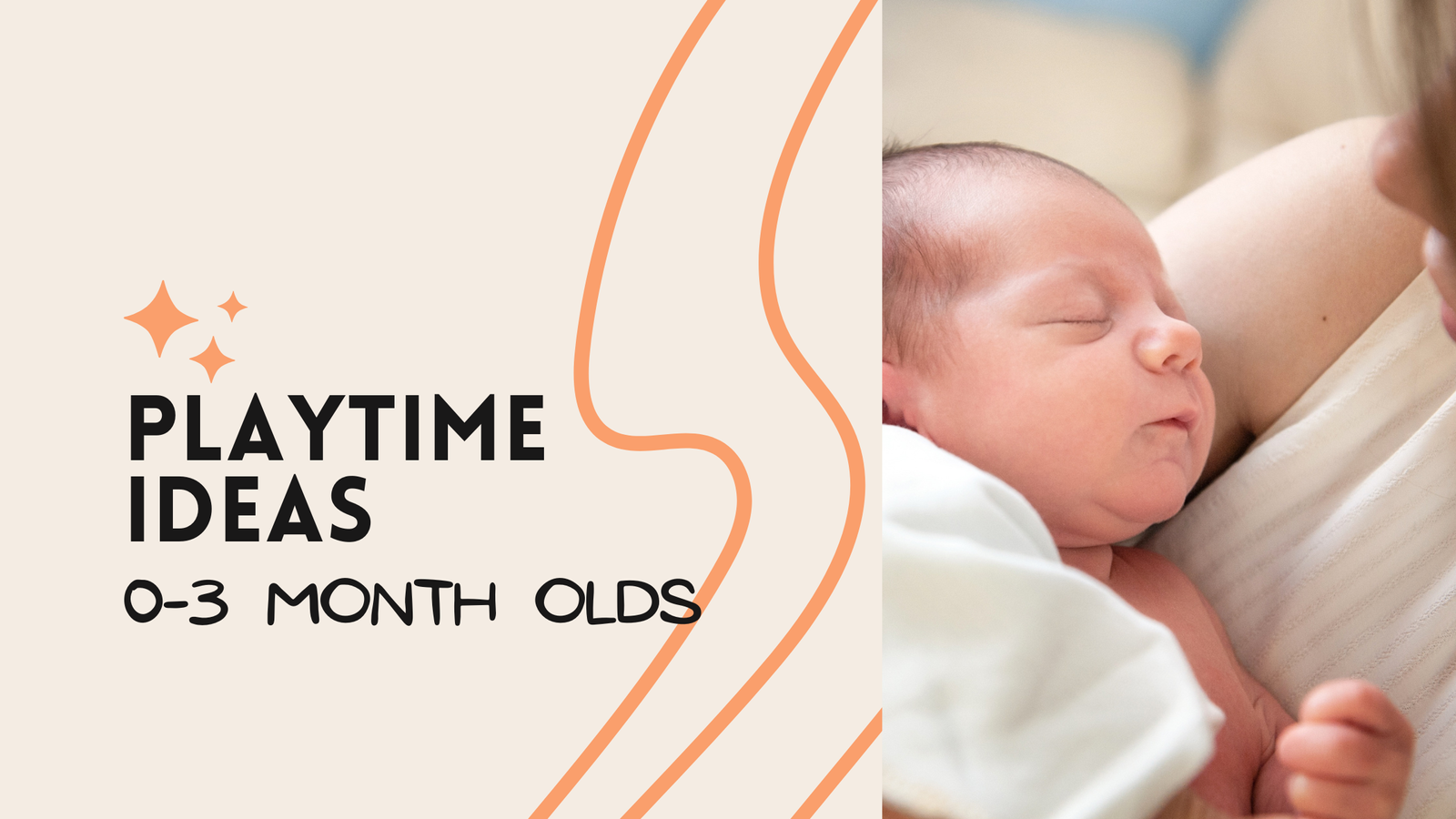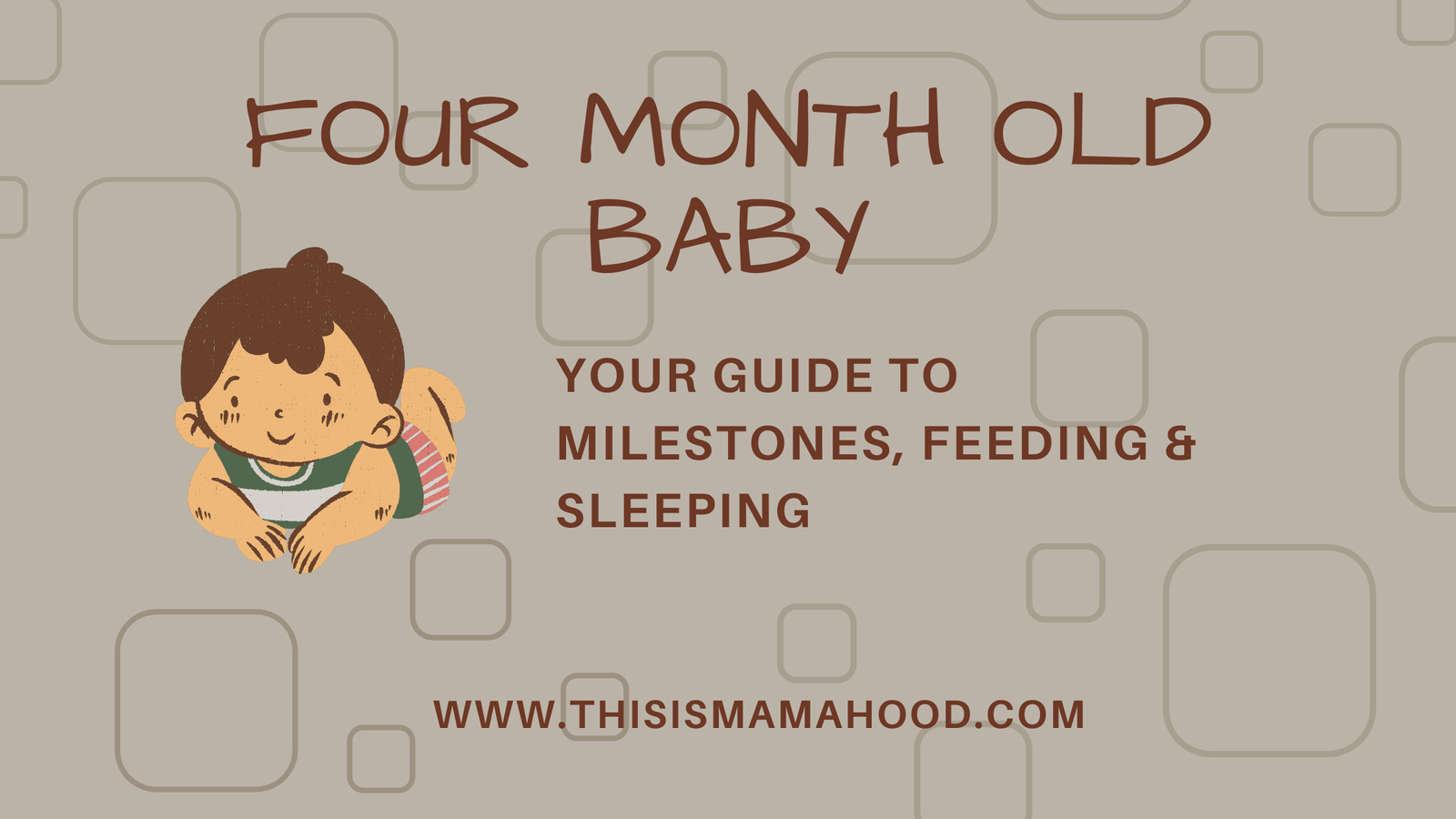Your three-month-old baby is now considered an infant and is no longer a newborn. This means you have officially survived the newborn stage. However, it may be bittersweet, as it reminds you how fast your little one will be growing up. Enjoy every moment you can, this next stage is challenging, but also a lot of fun at the same time.
Three-month-old baby milestones
Physical
At 3 months old, your baby should now be able to raise their head and chest off the ground while laying on their tummy. They should be able to lift their head up 90 degrees and be able to turn their head from side to side. You should notice that your baby is also starting to use their arms to support them in this position.
Your three-month-old will begin to reach for objects that are placed in front of them. They should be able to open and close their hands. This will allow them to begin to grasp items and hold onto them for short periods of time.
Cognitive
Visually, you will notice your 3-month-old baby begin to follow moving items with their eyes. If you slowly move a toy from side to side in front of their face, their head should track that item. Your baby will also start to recognize familiar people and objects from a distance.
Your baby’s hearing is also improving. They should be turning and looking in the direction of different sounds. For example, if you shake a rattle beside their head, they should turn and look at it. Your baby will also start trying to imitate some sounds. They will coo and babble. Make sure to have plenty of conversations with your little one to encourage this babbling.
Emotional & Social
Your three-month-old baby will be giving you and other familiar people plenty of smiles by now. Their smiles should be in response to things you do, like playing peek-a-boo or singing a song. You may even start to hear some laughs, but that may come a bit later. They should enjoy playing and being close to you; they may even start to cry when you leave or put them down.
Sleeping guide for a 3-month-old baby
Three months is the age when babies will start to sleep more at night and establish more routine nap times. Your baby should still be sleeping around 15 hours each day, however, most of that sleep will occur at night. If you are lucky, some babies will even start to sleep throughout the night at this age. However, don’t be concerned if your baby is still waking several times at night.
Naps should now be more established. Your baby should consistently be taking 2-3 naps every day. These naps may last anywhere from 30 minutes to 2 hours. Awake windows for babies this age last around 1-2 hours.

Feeding guide for a 3-month-old baby
How much should my 3-month-old eat?
Breastfed babies should still be fed on demand. You will notice, however, that your baby will go longer periods in between feeds. Their feeding schedule should be becoming a little bit more predictable, and you should be able to schedule feeds more.
Formula-fed babies should be drinking around 4-6oz, every 4-5 hours. In total, you should expect your 3-month-old to eat 24-30oz of formula each day.
What can my 3-month-old baby eat?
At three months old, your baby should still be exclusively drinking breast milk or formula. They are not yet developmentally ready to eat other foods. It is not recommended to give your baby water yet, as they could fill up on water and not get the nutrition they need. Formula and breast milk have enough water in them to keep your baby hydrated.
How do I play with my 3-month-old?
Choose activities that will help your 3-month-old baby develop the developmental skills they are currently working on. Tummy time on play mats with mirrors and pictures set up will encourage your baby to lift their head to look around. If you place some toys in front of them, they can practice reaching their arms out and try to grasp the items. This will also work with a play mat that has dangling toys that your baby can look up at and reach out for when laying on their back.
Make sure to connect with your baby socially and do things like reading books and singing songs. This will help your baby to start to understand language and copy some simple sounds. Games like peek-a-boo are also great social games that are sure to get your baby smiling and possibly laughing.
Schedule for a 3-month old
Now that your baby is doing more of their sleeping during the night and having longer wake windows during the day, it is the best time to start a schedule. Remember, not to be too strict with yourself and the schedule. Don’t stress out if you don’t follow it minute by minute. Schedules are rough estimates of the activities that you will do each day.
You can start having activities throughout the day that remain generally the same throughout the week, such as taking a walk in the morning or reading books in the afternoon. If you don’t already have an established nighttime routine, now would be a good time to start.
Below is an example of a typical schedule for a 3-month-old baby. Adjust the times based on when your baby wakes in the morning and when they go to sleep. You can fill the playtime slots with any activities that you feel fit.
7:00 am: wake up routine: diaper change, get dressed, cuddles, etc
7:30 am: feeding
8:00 am: playtime – tummy time
8:30 am: naptime
10:00 am: feeding
10:30 am: playtime – go for a walk, read some books, etc
12:00 pm: naptime
2:00 pm: feeding
2:30 pm: playtime – play mat, tummy time, etc
3:30 pm: naptime
4:30 pm: feeding
5:00 pm: playtime – cuddles, talking to your baby, peek-a-boo, etc
6:30 pm: bedtime routine: bath, pajamas, story, etc
7:00 pm: feeding and place down for sleep




